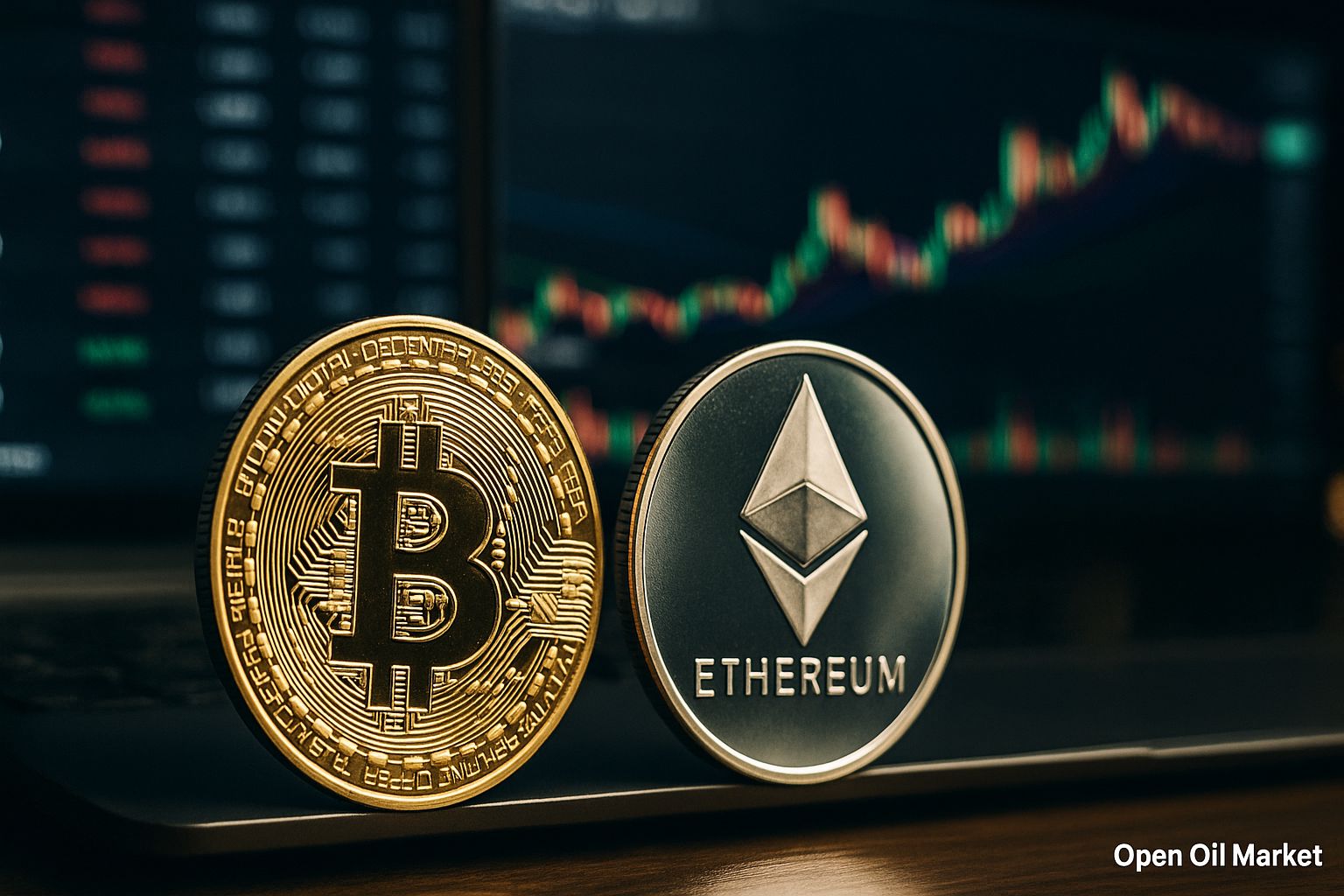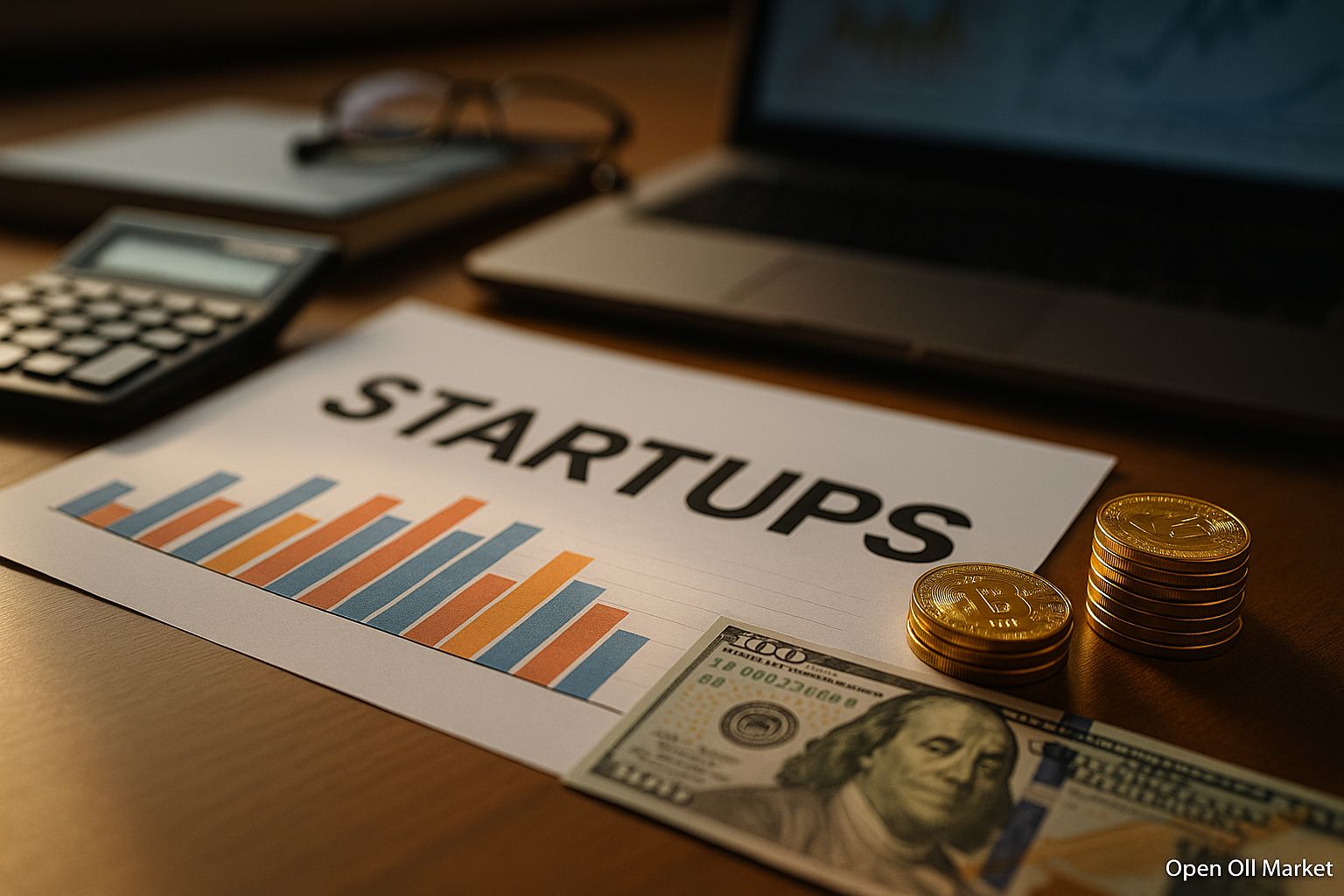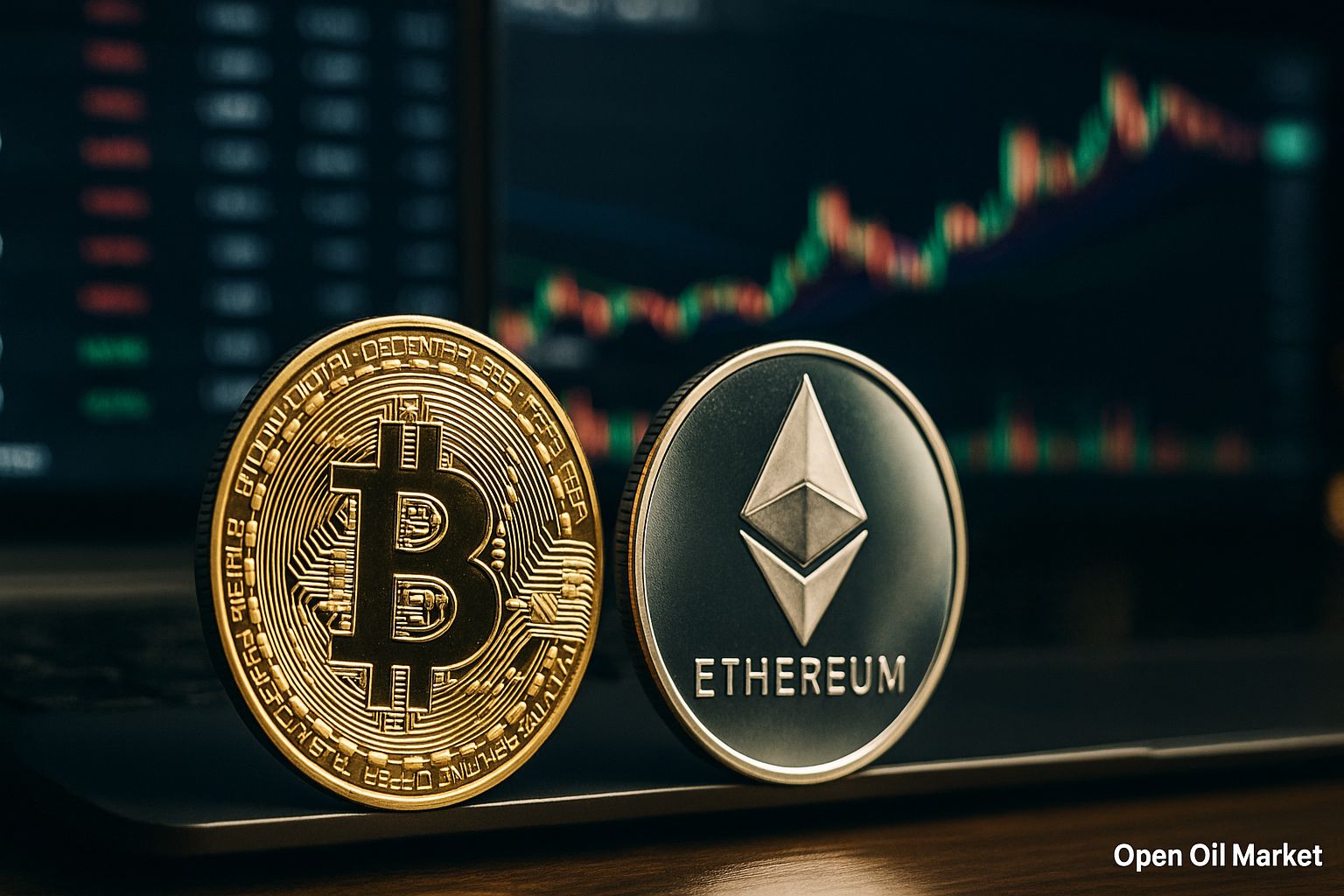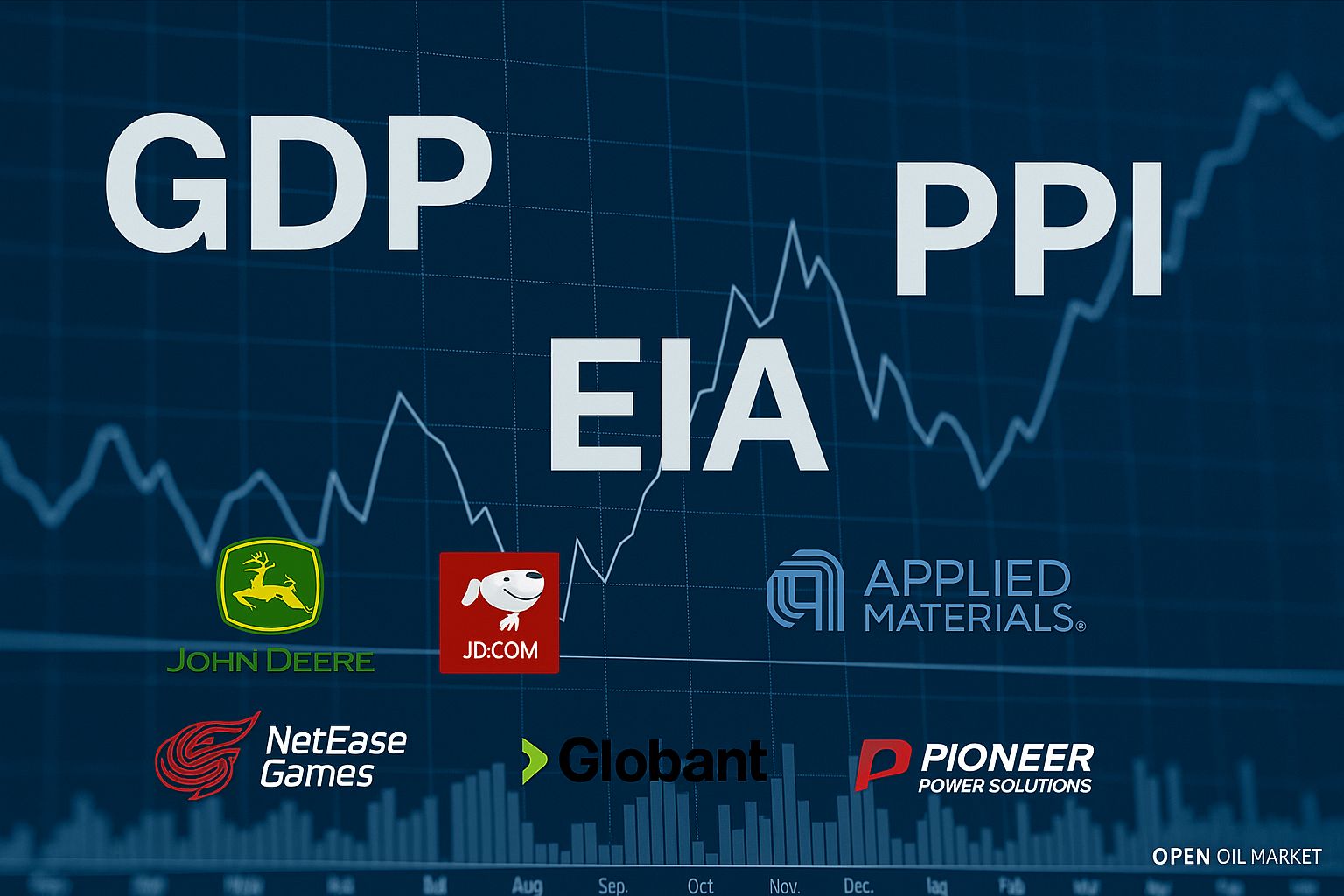
Detailed Overview of Cryptocurrencies as of August 14, 2025: Bitcoin Sets New Historic High, Ethereum at Multi-Year Peaks, Altcoin Growth, DeFi and NFT Trends, Institutional Investments and Regulation.
The cryptocurrency market greets Thursday, August 14, 2025, buoyed by new records and heightened investor optimism. After an extended rally, leading digital assets are maintaining historic peaks, demonstrating a rare combination of rapid growth and relative stability. Bitcoin has closely approached its previous maximum and has managed to surpass it, establishing a new price benchmark. Alternative coins (altcoins) are also showing accelerated growth against a favorable news backdrop and an influx of capital from major players. The total market capitalization of cryptocurrencies has reached unprecedented levels, reflecting a mass resurgence of interest in digital assets.
External macroeconomic factors are generally favoring risk assets: the absence of negative surprises and hints at an impending easing of the monetary policy from leading central banks are fueling appetite for cryptocurrencies. Additionally, positive shifts in regulatory frameworks in the US, Europe, and Asia are reducing uncertainty for investors. Against this backdrop, many market participants view the future with cautious optimism, assessing the prospects for further cryptocurrency growth in the second half of the year.
The Crypto Market: New Records and Steady Growth
In recent weeks, the crypto market has firmly established itself at historic highs. The total capitalization of digital assets has surpassed $4 trillion, marking a new record for the industry. Key cryptocurrencies are trading close to their highest levels, and periodic corrections do not alter the overall upward trend. Minor waves of profit-taking that occasionally arise after price spikes are quickly absorbed by demand, indicating that the market has formed a solid foundation for further growth.
Investors note a combination of high trading activity and moderate volatility, which is atypical for periods of such rapid ascent. Many analysts attribute the market's resilience to the increasing share of institutional capital: large funds and companies continue to expand their presence in cryptocurrencies, thereby smoothing price fluctuations. The overall news backdrop remains positive—macro data (such as the slowdown in inflation in the US and the likelihood of interest rate reductions by fall) is stimulating interest in risk assets. Despite ongoing geopolitical tensions, optimism regarding the actions of regulators and central banks outweighs fears, sustaining a strong appetite for digital assets.
Top 10 Most Popular Cryptocurrencies
- Bitcoin (BTC) – As the first and largest cryptocurrency, it retains over 50% of the total market capitalization. Bitcoin serves as digital "gold" for investors and set a new price record this week, reaffirming its status as the benchmark for the entire crypto market.
- Ethereum (ETH) – The second-ranked cryptocurrency by market capitalization and leading altcoin. The Ethereum blockchain underpins the DeFi and NFT ecosystems, and its transition to a Proof-of-Stake model allows holders to earn income from staking. ETH is trading at multi-year highs, reflecting strong demand from institutional players.
- Tether (USDT) – The largest stablecoin pegged to the US dollar. USDT plays a critical role in crypto trading, enabling traders to quickly move capital between exchanges without volatility risks. With strict reserve requirements and transparency, stablecoins are becoming increasingly reliable components of the market.
- Ripple (XRP) – The token of Ripple, designed for rapid cross-border payments. XRP is back in the spotlight following a legal victory against the SEC, which lifted its status as a "security". XRP is currently at multi-year highs, with the market anticipating the launch of exchange products that provide access to this asset for a broader range of investors.
- Binance Coin (BNB) – The native token of the largest crypto exchange Binance, used for fee payments and participation in exchange services. BNB remains consistently among the most valuable cryptocurrencies, despite Binance being under close regulatory scrutiny. The coin continues to see demand due to the extensive Binance Smart Chain ecosystem and loyalty programs for holders.
- USD Coin (USDC) – Another leading stablecoin issued by Circle. USDC is fully backed by reserves and complies with regulatory requirements, making it one of the most reliable storage vehicles in digital form. It is widely used by institutional investors and companies for transactions and transfers due to its transparency and stability.
- Solana (SOL) – A high-performance blockchain offering fast and inexpensive transactions. SOL has managed to regain investor confidence after technical difficulties in previous years and is once again showing growth. Solana's integration into global payment networks (e.g., Visa's support for transactions involving stablecoins) bolsters confidence in the platform's long-term prospects.
- Dogecoin (DOGE) – The most well-known "meme" cryptocurrency, which emerged as a joke but remains in the top 10 by market capitalization. The price of DOGE has been relatively stable in recent months, largely driven by community sentiment and media buzz. Despite its inflationary coin issuance model, Dogecoin continues to attract interest as an accessible entry point into the world of cryptocurrencies and a speculative object during hype phases.
- Cardano (ADA) – A smart contract platform that's evolving with an emphasis on a scientific approach and code reliability. ADA maintains its position among market leaders due to ongoing technical improvements to the network and an active community. Recent updates to Cardano have improved the scalability and functionality of its blockchain, which strengthens investor confidence, though significant price jumps have not been observed in the short term.
- Tron (TRX) – A blockchain platform popular in Asia, focused on entertainment applications and stablecoin issuance. TRX has successfully entered the top ten cryptocurrencies by market capitalization, driven by high transaction volumes on its network and stablecoin support. The project team has announced plans to buy back its own tokens worth up to $1 billion, demonstrating confidence in Tron’s long-term value and supporting the token's price.
Bitcoin: New Record and Institutional Support
The flagship Bitcoin (BTC) managed to surpass its previous all-time high price this week. During trading, BTC climbed above the record mark, marking an important psychological event for the market. The breakout was accompanied by increased volumes and a surge in news attention. Although some short-term traders took profits after the new high was established, the global trend remains upward: Bitcoin's price is being maintained in the upper range thanks to steady demand.
Experts note that the institutional factor plays a key role in Bitcoin's rise. Major holders ("whales") continue to hold their positions, reluctant to sell at new peaks, while investment funds use any price pullbacks to replenish their BTC reserves. The limited supply of coins in circulation, combined with the increasing influx of capital from corporations and traditional financial players, creates the groundwork for further price increases. A number of analysts on Wall Street are already revising their forecasts upward: in the absence of negative macroeconomic factors, Bitcoin could target new heights, with some predicting aims in the $130,000 to $150,000 range by the end of the year.
At the same time, there remains an element of caution in the market. On derivatives exchanges, there is notable interest in protective instruments—some traders are buying "put" options to hedge their positions against possible corrections after the rapid rally. Nevertheless, the current stability of BTC is impressive: even minor outflows from Bitcoin-related investment products are quickly countered by inflows as optimism returns. This indicates the formation of a robust base of buyers: long-term investors are willing to hold and accumulate Bitcoin, mitigating the effects of sales by speculators.
Ethereum: Institutional Demand and Multi-Year Highs
The second most significant crypto asset, Ethereum (ETH), is strengthening its market position along an upward trend. ETH is holding steady around its max values since 2021, periodically approaching the $4,500 mark. The historical peak of Ethereum (~$4,800, reached at the market's zenith in 2021) has yet to be surpassed, but the current momentum indicates the potential for an assault on this peak, provided favorable conditions persist. Partial profit-taking by some investors during the rise temporarily holds back a sharper surge, yet overall sentiments towards Ethereum remain positive.
Institutional and corporate investors are showing heightened interest in Ethereum. Recently, a record influx of funds into ETH-based funds has been recorded—the daily investment volume exceeded $1 billion, which is a historical high. Major banks and investment houses are also providing optimistic forecasts: Standard Chartered, for example, significantly raised its target price for Ethereum, anticipating around $7,500 by the end of 2025. Ethereum's attractiveness stems from a combination of growth potential and staking yields: ETH holders can earn 3-5% per annum by participating in the network. This positions Ethereum as a kind of “digital oil” in the modern crypto-economy—an essential asset for the functioning of numerous decentralized applications, DeFi protocols, and NFT platforms.
Beyond price performance, Ethereum is demonstrating record network activity. Over 2 million transactions are processed daily on its blockchain, reflecting the vibrant development of its application ecosystem. An increasing number of public companies are adding ETH to their balance sheets alongside BTC, seeing it as a strategic digital resource. Growth in institutional participation and ongoing technical upgrades of the network (enhancing scalability and efficiency) provide a robust foundation for Ethereum's continued positioning in the market.
Altcoins: Price Growth Amid Positive News
Aside from the two flagships, most cryptocurrencies in the top ten are also moving upwards. Investor interest is shifting to major altcoins, many of which are nearing their local highs from recent years. Positive news and the resolution of uncertainty surrounding several projects have spurred capital inflow into this segment of the market.
- XRP (Ripple): remains one of the leaders in growth this year, consolidating at multi-year peaks (above $3). The recent conclusion of the lawsuit with the SEC removed key regulatory risks, leading to a surge in investor confidence. XRP is again attracting institutional interest—expectations are that the first exchange products linked to XRP may emerge this fall, further solidifying the token's position in the legal market.
- Binance Coin (BNB): The native token of the Binance ecosystem demonstrates relative stability against the overall bullish trend. BNB is widely used in trading operations and smart contracts within Binance Smart Chain, supporting consistent baseline demand. Despite regulatory pressure on Binance in several countries, the coin retains user trust thanks to its utility and the exchange's efforts to comply with regulatory requirements.
- Cardano (ADA): The cryptocurrency from the Cardano platform continues to progress, helping it stay in the top ten. Recent network updates have improved speed and scalability of the blockchain, strengthening foundations for future growth. While ADA has not shown sharp price jumps lately, the project's community remains loyal, viewing Cardano as a long-term investment asset with a scientifically-grounded development roadmap.
- Solana (SOL): One of the fastest blockchains on the market, Solana has regained a significant portion of lost ground. The SOL price continues to grow, supported by news of technology integration into traditional finance—for instance, the Solana network was added by Visa for stablecoin transactions. Analysts believe that should the US approve new cryptocurrency ETFs, Solana may receive an additional influx of institutional capital, which could drive further growth.
- Dogecoin (DOGE): The popular meme cryptocurrency maintains its place among the largest coins, although its price has been relatively stable in the absence of hype. The movement of DOGE's price continues to be heavily influenced by community activity on social media and sporadic mentions by influential figures. Thanks to its low entry threshold and widespread recognition, the Dogecoin brand remains attractive to retail investors, despite the inflationary nature of its issuance, limiting the long-term growth of per-coin value.
- Tron (TRX): The Tron blockchain has cemented its position near the top of charts due to its demand for stablecoin issuance and decentralized applications, especially in the Asian region. TRX is demonstrating positive dynamics amid news that the project's team plans to buy back a significant volume of tokens from the market (worth up to $1 billion) as a corporate reserve. This move, along with the overall high transaction activity on the Tron network, signals developers' confidence in the platform's future and supports the token's price.
Regulation: Favorable Changes in Key Regions
Major jurisdictions worldwide continue to soften their approach to cryptocurrencies, eliminating uncertainty and stimulating capital inflow. Below is a brief overview of recent regulatory trends:
- USA: A federal law concerning digital assets has been enacted for the first time, establishing rules for stablecoins and crypto companies. The new act requires 100% reserve backing for stablecoins and heightened financial transparency from their issuers, enhancing trust in this segment (the market for stablecoins is already around $250 billion). Simultaneously, the Securities and Exchange Commission (SEC) under new leadership is softening its stance: legal actions against major exchanges have ceased, and an initiative called "Project Crypto" is launched to adapt regulations for the blockchain industry. These steps indicate a more lenient policy and increase the odds for the approval of the first spot Bitcoin ETFs and ETFs for major altcoins in the coming months, which will open up direct access to cryptocurrencies for traditional investors.
- European Union: EU countries are implementing a pan-European regulation known as MiCA (Markets in Crypto-Assets), introducing uniform rules for crypto asset circulation. MiCA requires the registration of crypto companies, compliance with capital standards, and information disclosure, while also implementing consumer protection measures and anti-money laundering provisions. The first licenses under the new regulations are expected to be issued as early as 2024, with the industry preparing in advance for this reform. The EU's ambition to balance risk control with support for innovation should provide a more transparent and secure environment for the development of crypto businesses.
- Asia: Key financial centers in the region are strengthening the legal framework for working with cryptocurrencies. In Hong Kong, a licensing system for crypto exchanges and stablecoin issuers is in effect from August 1, under the oversight of the local regulator (HKMA). Companies must maintain full reserve coverage of tokens and report regularly, aimed at protecting investors and attracting legal crypto businesses to Hong Kong. Singapore, Japan, and the UAE are also offering favorable regulatory regimes, competing for status as the leading crypto hub in Asia.
- United Kingdom: The UK's FCA regulator announced the upcoming lifting of the ban on selling crypto derivatives (including exchange-traded notes linked to Bitcoin and Ethereum) to retail investors starting October 2025. Simultaneously, new disclosure requirements regarding risks for consumers are being introduced. This shift reflects London’s ambition to maintain the competitiveness of its financial sector by being open to cryptocurrencies and to take a leading position in Europe in the development of digital finance.
Traditional Financial Sector: Aiming for Integration
Traditional financial institutions are increasingly integrating cryptocurrencies into their operations:
- Payment Networks: Following Visa's announcement of stablecoin integration, another leading payment system – Mastercard – has begun a pilot project using digital currencies for international settlements. In collaboration with banks, Mastercard is testing transfers using stablecoins to reduce transaction time and costs. This step demonstrates that payment giants are increasingly adopting blockchain solutions into their infrastructure.
- Investment Funds: The world's largest asset managers are close to launching cryptocurrency products. BlackRock, Fidelity, and others have filed applications to establish spot Bitcoin ETFs, and the market is anticipating their approval in the near future. Even before these instruments appear, institutional players are increasing their investments through existing crypto funds and trusts – capital inflow into such products is setting records, reflecting growing demand. The approval of the first spot ETF in the US would be a historic event, definitively cementing the link between the traditional stock market and the digital asset market.
- Banks: Traditional banks are beginning to offer crypto-related services as the regulatory landscape clarifies. In the US, several large banks are exploring the possibility of storing and purchasing crypto assets for clients after the passage of the new law, while in Europe and Asia, banks are already providing trading and custodial services for digital currencies. The integration of stablecoins in interbank settlements and the issuance of their own "digital dollars" are also in focus: the financial sector aims to leverage the advantages of blockchain to enhance efficiency and attract new clients.
Market Outlook: Investor Expectations
Following the exuberant growth of recent weeks, a short-term pause in the upward trend for consolidation seems likely. However, the fundamental premises for further ascent remain strong. Analysts note that recent local corrections have been technical in nature: profit-taking following the rally has allowed the market to cool down and gather new energy for the next wave. If the global economy continues to signal positively—inflation is slowing, and major central banks are easing their rhetoric—investors will likely return to risk assets, including cryptocurrencies, with even greater enthusiasm.
Among the potential catalysts for renewed growth are the anticipated approvals of the first exchange-traded funds based on Bitcoin and Ethereum in the US, the launch of similar products for major altcoins, and furthering the presence of institutional players in the industry. The realization of these events could bolster trust in digital assets and attract a new influx of capital. In an optimistic scenario, by the end of 2025, Bitcoin and several leading altcoins may once again update historic highs, further elevating cryptocurrencies' status as one of the most dynamic and attractive sectors for investment.
Meanwhile, market participants remain aware of the risks. The Fear and Greed Index for cryptocurrencies is in the greed zone, indicating possible overheating of sentiments in the short term. Any adverse news—from economic shocks to major hacks or technical failures—can temporarily weaken the rally. Thus, investors adhere to principles of diversification and caution, understanding that even amidst overall growth, digital assets remain volatile. Overall, the increase in regulatory transparency and the influx of professional capital allow for cautiously optimistic forecasts for the market's future, anticipating its continued maturation and expansion.




